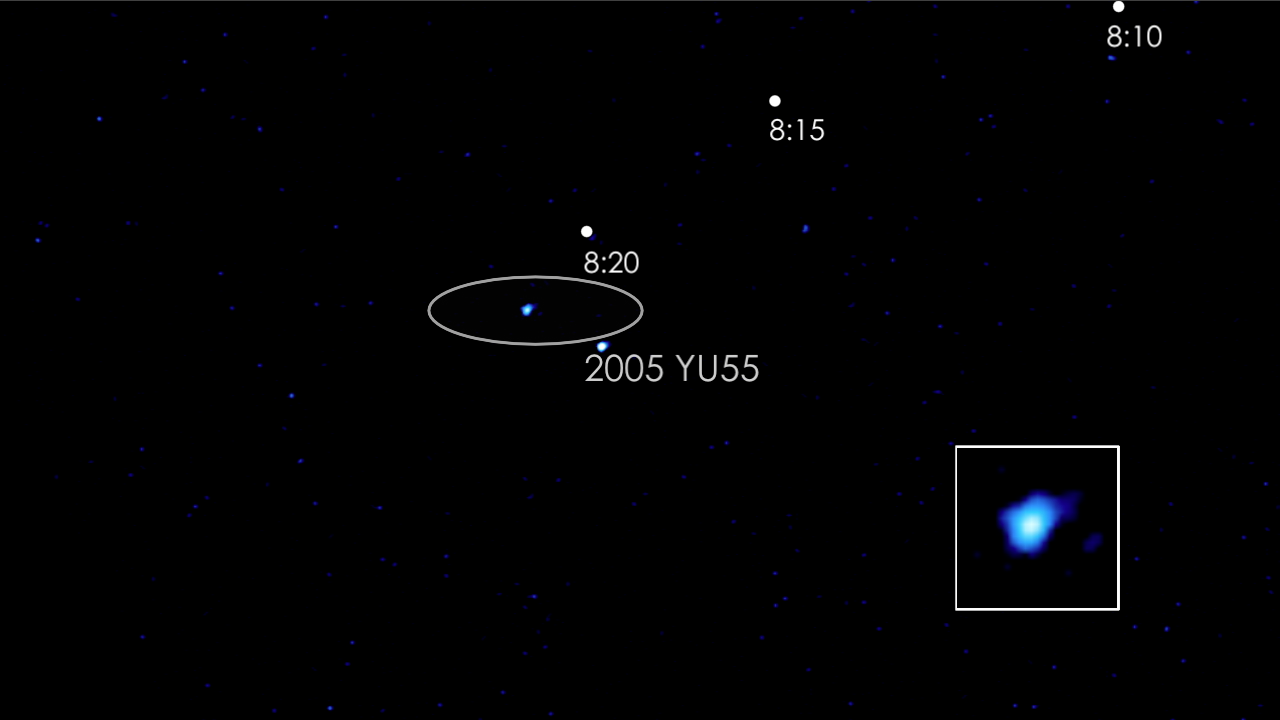Close Encounter
On November 9, 2011, asteroid 2005 YU55 blazed past Earth at nearly 25,000 miles per hour. Overshooting our planet by more than 200,000 miles, the asteroid didn't pose a threat of a catastrophic collision. However, the quarter-mile-wide tumbling space rock did dip below the moon's orbit, making it one of the closest asteroid approaches of its size identified to date. As ground-based telescopes tracked the asteroid using radar, infrared and optical light, NASA's Swift satellite imaged it at ultraviolet wavelengths. Observing the asteroid using ultraviolet light gave insight into the makeup of its surface—information astronomers can use to predict its future trajectory. Researchers estimate the asteroid, which is locked in orbit around the sun, will pass safely by our planet in 2041 and 2075. Watch the video to see satellite footage of asteroid 2005 YU55 hurtling through space.

Close Encounter
The ultraviolet sensor onboard NASA's Swift satellite imaged asteroid 2005 YU55 on the morning of Nov. 9, 2011.

While it appears the asteroid followed a curved path, the perceived slope is actually due to the satellite's movement.

Viewing ultraviolet images of 2005 YU55 (above) helps astronomers learn more about the composition of its surface.

The clearest views of 2005 YU55 (above) came from NASA's Goldstone Solar System Radar facility in California.

Scientists believe thousands of asteroids exist in the solar system that will come within 5 million miles of Earth's orbit (shown in green above).
For More Information
See NASA.gov
Credits
Please give credit for this item to:
NASA's Goddard Space Flight Center
Swift footage and images courtesy of NASA/Swift/Stefan Immler and DSS
Goldstone radar images courtesy of NASA/JPL-Caltech
Near-Earth asteroid image courtesy of NASA/JPL-Caltech
-
Video editor
- Scott Wiessinger (USRA)
-
Producer
- Scott Wiessinger (USRA)
-
Scientist
- Stefan Immler (UMCP)
-
Writer
- Francis Reddy (University of Maryland College Park)
Release date
This page was originally published on Tuesday, October 16, 2012.
This page was last updated on Wednesday, May 3, 2023 at 1:52 PM EDT.
